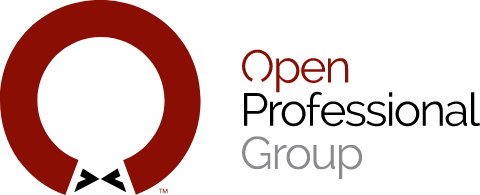NASA’s Voyager 1 EMERGENCY – Why Documentation is SO Important

As reported by Business Insider, NASA’s Voyager 1 which was launched in 1977 and had an expected lifespan of 5 years, it has now been operational a full 46 years helping scientists to understand the cosmos. NASA is striving to keep it operational until 2030. In May 2022 Voyager 1 started sending corrupted data from the altitude-control system. The altitude-control system sends telemetry data to NASA which is its orientation in space. This system is what keeps the antenna constantly pointed directly back at Earth over a span of 14.8 billion miles – and that distance grows by the second. So it’s a critical system.
All of the original engineers have long retired so their in-depth knowledge of the processes and systems were not at hand to leverage. Most of their documented knowledge was packed up in boxes as they retired. Some documentation made it to a single storage facility, but was stored by employee name, versus being stored by system or function. To compound the issue, unknown numbers of documents were taken home when the employees retired. A single mission manual that includes all system designs, process documentation, and user manuals was lacking.
The current staff had to remember who worked on the altitude-control system from design, build, and programing. The team had to identify any and everyone who had anything to do with this system spanning decades of operation. NASA then spent the effort to locate and contact the thousands of previous employees or living relatives to attempt to recover any documentation they might have stored.
“It was a very time-consuming process”
Suzanne Dodd, project manager for the Voyager mission at NASA's Jet Propulsion Laboratory
Amazing!
When I came across this story it reminded me of how important documentation is and the benefits of having it.
Reasons and Benefits of Documentation
Much like the Voyager 1 & 2, which are unique and valued, your business, its processes, and its intellectual property are also unique and valuable in many ways. Let’s highlight a few reasons for and the benefits of documentation.
What are the Benefits of Custom Developed Software Applications?
Custom-developed software applications are exactly what it sounds like. They are web-based applications, mobile apps, integration interfaces, API (Application Programming Interface) apps between systems, and anything computer coded in various software languages. You get exactly what you want. Define the vision and build it to make it real. You control the direction and feature set of the given technology.
Just like NASA and all the amazing engineering staff of the Voyager project, let’s further explore the value of creating and maintaining documentation. Document where no human has gone before.
System Documents: Empowering Developers and IT Teams
System Documentation empowers you and your team to know what version of supporting software tools have been and are currently being developed and used. It should outline an upgrade path to underlying supporting technologies to maintain your ability to stay current with technology and security concerns. For those seeking potential investment partners, documentation shows clarity and control of your environment which helps validate your infrastructure to would-be investors. Over the long-range, it is better to remain in current versions of all underlying technologies to reduce vulnerability, risks, and remain cutting edge, continuing to support your business operations and valuation.
User Documentation: Empowering Self-Service Knowledge
On this planet who doesn’t know how to reset their password? Right? But, look at any website or app and they have a support user documentation page with step-by-step instructions on how to Change Your Password. If you were interacting on Facebook, Instagram, Pinterest, TikTok, LinkedIn, or any eCommerce sites you just know you can find your answer to any question you have. Why? Because these businesses understand the financial value of providing robust user documentation. Think for a moment about how much time and money in support tickets self-service help tools can save? Excellent end user documentation can be valued in savings of millions of dollars a year for large organizations.
Where Do I Begin?
You must define who is responsible for system user documentation from all roles. Will it be the custom software developers or will it be internal knowledge experts? If documentation has not ever been created don’t focus on the past. Focus on today and the future. Start building documentation based on what exists in the current iteration of your platform, and then work backwards as time allows. The important thing is to begin the process, and continue the process consistently until the documentation is fully up to date. Then, as you introduce changes in the interface, new features and other adjustments, keep the documentation updated as part of your testing and rollout procedures.
The Last Frontier
When creating platform documentation the process of doing so also supports your quality control process. If you can perform the given function to document it, this confirms the function operates as expected. The long run additional investment will be outweighed by the savings in many categories over time. Looking only at one category of savings, the reduction of time spent on support by having well documented systems can have a multiplier effect by both reducing support staff costs and simultaneously improving customer experience.
Do You Need Help Like Voyager 1 Did?
Who can’t use a bit of help to move to the next level and overcome a challenge? If considering a custom-built website, software, or mobile application variables can be scary. Can you imagine the NASA Voyager’s initial engineering team? The variables they had to consider to make this program so successful for so long were- amazing! While your application may not be 14 billion miles away, it still has a tremendous amount of value for your business. If you need help with documentation, OPG can most certainly help guide or even develop the documentation for you.
As the Voyager example illustrates, there are considerable advantages and cost savings by incrementally developing and maintaining documentation for your systems, process, usage and users. Doing so can save tremendously on support costs, while also keeping the documentation current as your platform evolves. Over the long term this bolsters your ability to maintain your platform, to explain your platform, and to prove the long term value of your platform to investors, customers and other stakeholders.
If you would like to explore some options for documenting your platform, reach out, we would love to talk about the possibilities!
~ Dennis

